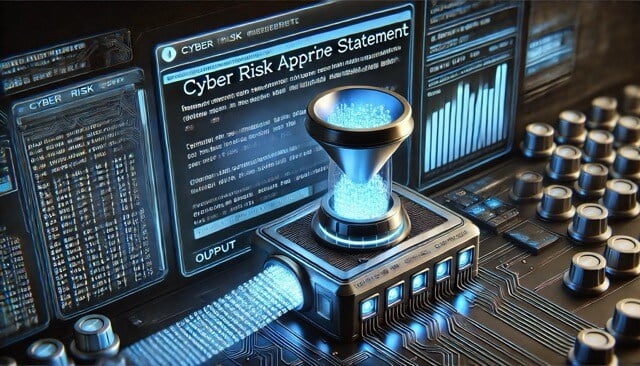Cybersecurity leaders and teams are overburdened by several growing trends and issues. And when your cybersecurity team is overworked and unequipped to manage cyber risk proactively, the organization is bound to falter to cyber threats - putting the entire business at risk.
As technology advances, so do the tactics of cybercriminals. With the rise of ransomware, phishing scams, and other cyber threats, cybersecurity teams have to work harder to keep up with the ever-evolving methods of cyber criminals. Another factor that lends to the rise of cyber threats is the recession.
Cybercriminals will waste no time taking advantage of security and risk teams being asked to do more with less. With shrinking budgets and an increasingly complex regulatory and technology environment, security teams cannot hire the talent they need while facing a cybersecurity talent shortage. It seems like the roadblocks are endless for security practitioners.
One approach would be deploying end-point technology for each pain point, introducing disparate technologies and many third-party applications to a struggling security team. The opposite would be utilizing a solution powered by automation that delivers several use cases within a single platform.
Automation is critical for security teams. By minimizing the inefficiencies of manual processes, security teams can refocus their time and budget on other areas of improvement. Automation alleviates the burden associated with manual processes like mapping frameworks, cyber risk assessments, and control scoring, and overall, can deliver faster and more accurate results. With a platform like CyberStrong, you can do even more with risk data. Use this distilled data to inform decision-making and cyber risk management strategizing with security and business operations. Keep reading to learn how automation can improve cyber risk assessment processes.
Application of Automation
With each step of the risk assessment process, CyberStrong offers an automated solution to help organizations save time and money by yielding actionable insights to drive mature cyber risk management.
Continuous Control Automation
Continuous Control Automation, or CCA, is CyberSaint’s unique approach to managing and monitoring real-time risk and control changes. CCA was built to leverage natural language processing (NLP) to map telemetry from various security products to controls in a customer environment, automating scores at the control level and pulling in evidence.
Instead of working with point-in-time data, CCA delivers real-time updates on control failure and why these changes occurred. This approach to control automation impacts 90% of a given control set. As mentioned earlier, security practitioners must be able to act on the data collected, not just park it on a platform. Control data can enrich risk dashboards, reports, and the risk register with CCA.
Security teams need help managing compliance and tracking progress with each framework as the regulatory environment shifts and new standards are rolled out. CCA equips risk and security teams with the ability to proactively comply with gold-standard approaches like ISO, NIST, CIS 20, CMMC, and custom-built frameworks.
Automated Crosswalking
Crosswalking projects are valuable tools for viewing control performance for a single asset or system against multiple frameworks. One can complete an assessment using one framework by indicating which controls align between frameworks and then carry that data to several other evaluations leveraging different frameworks. The downside is that crosswalking projects are costly and time-consuming. There could be thousands of controls within a given framework that would need to be mapped. Whether you complete the project in-house or outsource it, the task is expensive. It is based on dated control information since manual processes cannot incorporate real-time changes to the security posture.
Automated crosswalking enables security practitioners to map controls between frameworks and map compliance posture in just a few seconds. CyberStrong takes crosswalking a step further by utilizing NLP to understand the intent of the control to deliver a more accurate mapping result. CyberStrong enables the efficient performing of cyber risk assessments against industry-standard frameworks, custom control sets, and new regulatory requirements.
In addition to this automated approach, security practitioners can build crosswalking templates to reduce duplicate efforts for several crosswalks across various departments. Templates improve consistency across assessments and compliance reporting.
Purpose-built Integrations
Add additional context and enrich cyber risk assessment data by leveraging actionable intelligence from existing tools in your tech stack. Incorporate data related to vulnerability management, threat feeds, cloud compliance, and risk through CyberStrong’s several integrations with Azure, AWS, Snowflake, Tenable, and more.
Data Lakes
Data lakes are quickly becoming the go-to solution for storing all structured and unstructured data in a central repository and can typically scale with your organization. Snowflake is one of the most common data lake providers, and security practitioners may use a data lake for analyzing, reporting, and querying data stored in a cloud system.
Following the CyberSaint ethos of providing automated solutions that enable security and risk teams to do more with accurate data, CyberStrong’s integration with Snowflake centralizes all of the data across disparate telemetry tools. This single integration pulls and queries that data to enhance risk assessments and reporting within CyberStrong, including financial impact analysis and board reporting. Users can then funnel that risk assessment data to Snowflake for additional analysis and reporting on their platform.
Automating for the Future
There are two crucial factors to consider when looking to improve your cyber risk assessment process. How can I automate this process, and how can I centralize this process? As important as it is to leverage automation, it is equally important to select a solution that can provide several automated capabilities. This will save your team time and money and give an ease of use by building on an all-in-one solution. A centralized approach also means that security and risk teams can use the data in many different processes without the roadblock of funneling information from disparate tools.
Crosswalking, control automation, industry integrations, and access to data lakes are all critical components of automating a cyber risk assessment. CyberSaint offers each capability in the CyberStrong platform. To learn more about our centralized approach to automation, click here.





.png)
.png)
.png)
%201.png)
.png)




